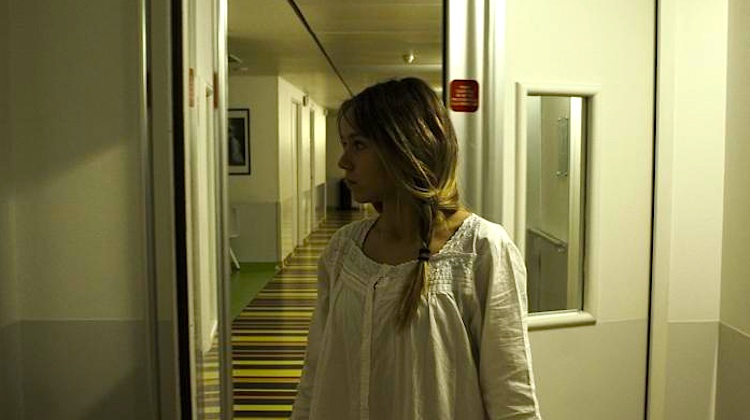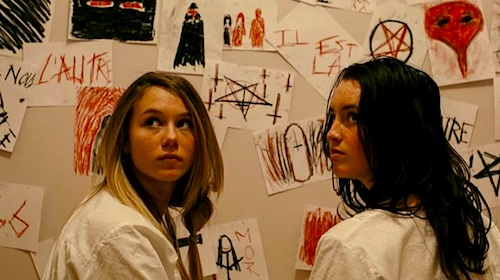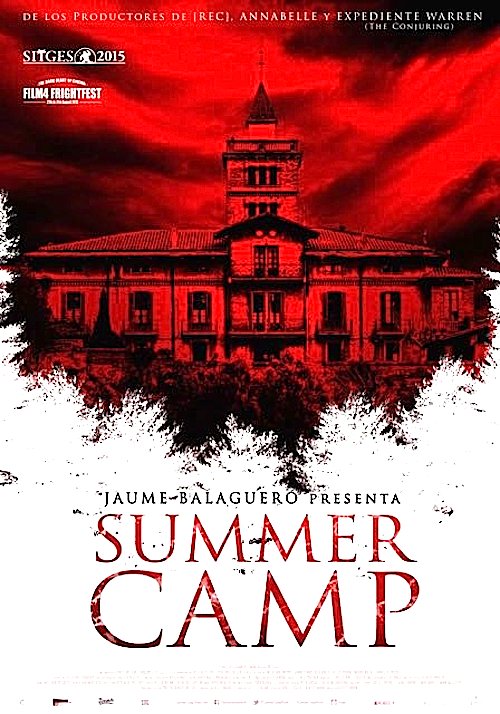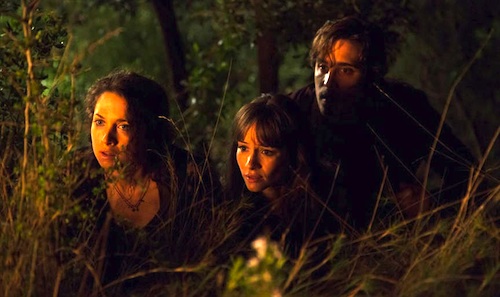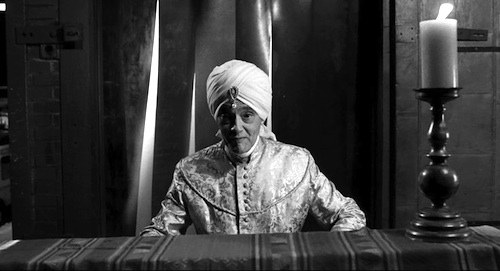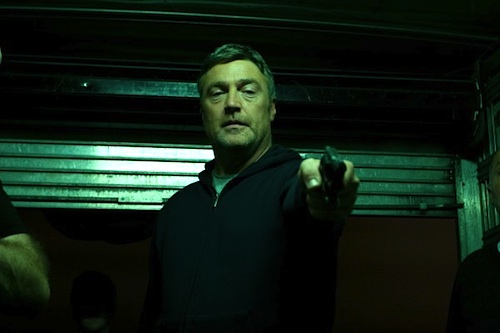By Joe Bendel. Montse lives in 1950s Madrid, but she shares a close kinship with the sisters in Whatever Happened to Baby Jane? You could say Montse has issues. Oh my, does she ever. Unfortunately, that means everyone around her also has issues. At least as a shut-in seamstress, she has a limited social circle, but she still manages to do extensive damage in Jaunfer Andrés & Esteban Roel’s Shrew’s Nest, which screens as part of the Film Society of Lincoln Center’s Scary Movies 9.
It is pretty obvious Montse’s abusive father is to blame for her dysfunctional state of mind. He has been dead for years, but she is still tormented by hallucinations of the sanctimonious hypocrite. The film hints darkly at what may have transpired between them, eventually confirming everything. Montse largely shielded her younger sister, known simply as “La Niña” from their father, but she became problematically controlling and sometimes even frightening in her own way. The two grown sisters still live together in their family’s flat, but Montse’s chronic agoraphobia prevents her from stepping outside. As a result, she relies on La Niña to be her connection to the outside world.
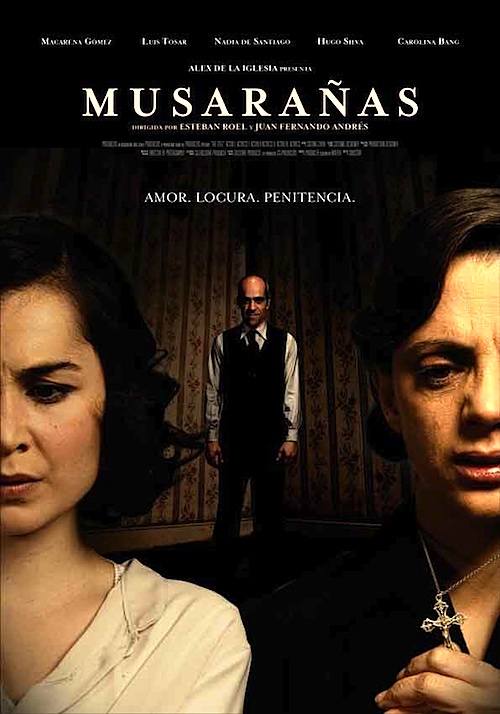 One day, Montse discovers the playboy from the upstairs flat is lying wounded on their landing. Somehow she skootches him inside and starts nursing Carlos. Rather taken with the handsome ladies’ man, Montse decides to keep him. At first, she tries to hide his presence from her sister and their clients, but that simply is not realistic. At first, Hugo is grateful for Montse’s care and the haven she provides from his pregnant lover and her unamused father. However, as his broken leg turns black and festering, he will look to La Niña for help.
One day, Montse discovers the playboy from the upstairs flat is lying wounded on their landing. Somehow she skootches him inside and starts nursing Carlos. Rather taken with the handsome ladies’ man, Montse decides to keep him. At first, she tries to hide his presence from her sister and their clients, but that simply is not realistic. At first, Hugo is grateful for Montse’s care and the haven she provides from his pregnant lover and her unamused father. However, as his broken leg turns black and festering, he will look to La Niña for help.
Yes, Nest is more than a little Misery-like, except Montse might just top Annie Wilkes’ hobbling scene. Yet, we also understand the twitchy, bug-eyed, morphine-addicted Montse is the film’s original victim, who is still be victimized by her father, from beyond the grave. Frankly, it is absolutely amazing how much compassion Andrés & Roel preserve for Montse, because great gosh almighty, can she dish out the pain.
Whether you love Nest or utterly despise it, you will never forget Macarena Gomez’s performance as Montse. It is one for the ages. She manages to do acutely subtle bits of character-establishing business, as well as wildly over the top scenery chewing, often simultaneously. In contrast, Nadia de Santiago is a paragon of sensitivity and reserve as La Niña, but there is no way she can avoid the gargantuan shadow cast by Gomez’s Montse.
Nest is another fine example of the meticulous care given to set dressing and general mise-en-scène in Spanish horror films. The fact that this Grand Guignol of domestic carnage is set foursquare in the Franco era is hardly accidental either, especially with Álex de la Iglesia on board as a producer. Regardless, as a claustrophobic Iberian psycho-thriller, it is pretty darn effective. Recommended for fans of Spanish horror movies, Shrew’s Nest screens this coming Monday (11/2) at the Walter Reade, as part of Scary Movies 9.
LFM GRADE: B
Posted on October 29th, 2015 at 10:31pm.
